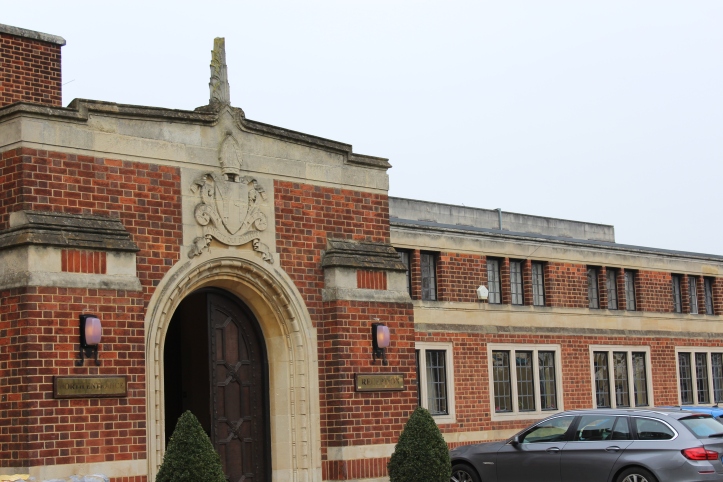
Ah, Croydon, Croydon, Croydon – memories of the 50 Pence Building (or the Threepenny Bit Building for those of you who are a little older), where my boyfriend at the time worked. Visiting the Ship Pub, great for heavy metal music, and venturing a little further down, South Croydon for a spot of dancing to the Red Hot Chili Peppers downstairs at the Stairway…
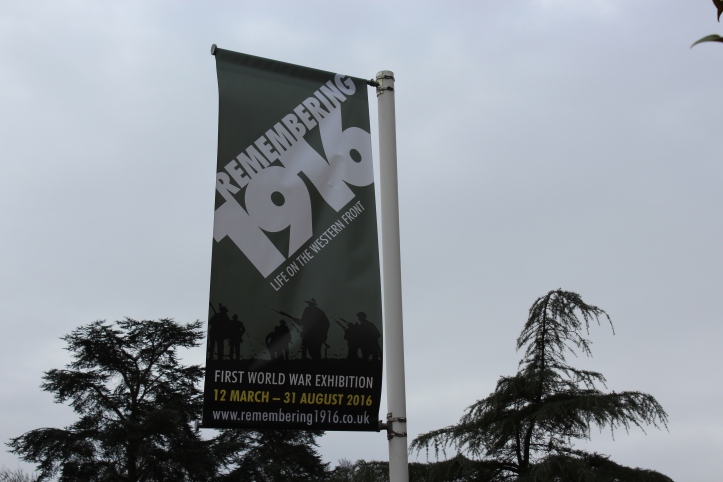
But I digress, I am back in Croydon, no pubs to visit this time unless I pop into the Swan and Sugar Loaf to buy some lunch, which rather depressingly appears to have become a Tesco. This time I am off to visit the Whitgift School, an independent boys school set in South Croydon. I am visiting a new exhibition Remembering 1916 – Life on the Western Front, and as an extra bonus I am taking my Dad along with me.
Now it is easy from my first paragraph to get a few misconceptions about Croydon, I can’t deny I came to this exhibition with a few misconceptions of my own, I was unsure of the kind of exhibition I was visiting, I thought it would be small scale, perhaps a tad amateurish and as it is set in a boys school where many pupils went on to fight and die in the war, I thought it might be a little jingoistic too. Well I couldn’t have been more wrong. 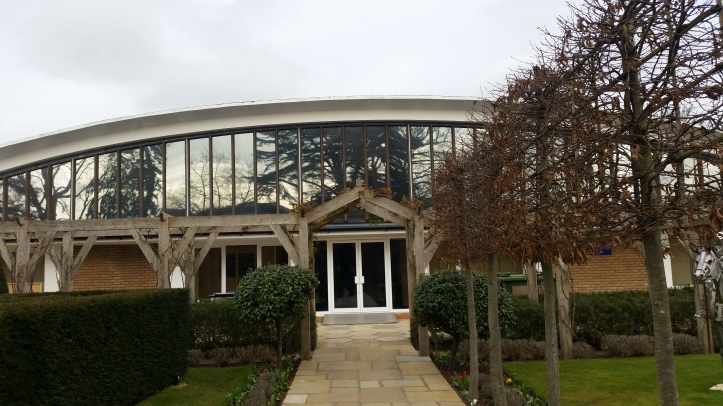
The exhibition is large, over 500 objects, set in an Exhibition Centre that once functioned at the school’s performing arts centre. Originally it even had a swimming pool, very useful for when you are recreating a soldier climbing down into the trenches! There are room recreations, dioramas, mannequins, Pathé news reels and hundreds of objects. There is even a full scale original German field wagon and horses! I am blown away by the scale.
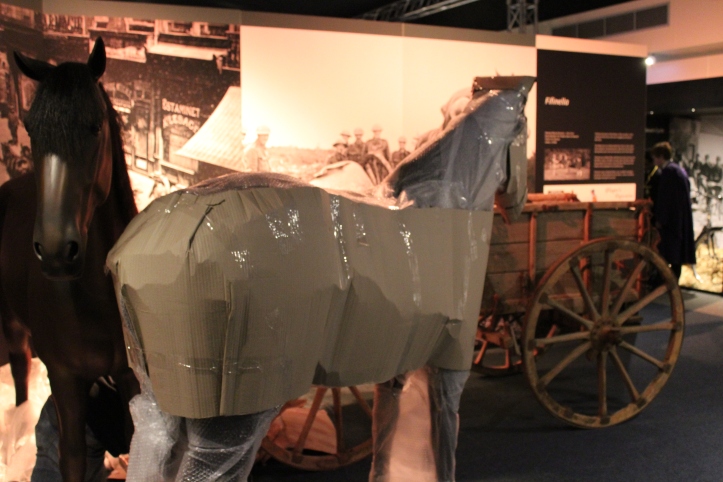
The staff are in the full throes of installation on the press day, seeing mannequins being carried in with the ambient sounds of bombs dropping in the background I half expected to see one being brought in on a stretcher with someone shouting ‘Medic’. Thankfully a ‘mind your backs’ is sufficient to see the soldier brought safely into his new post.
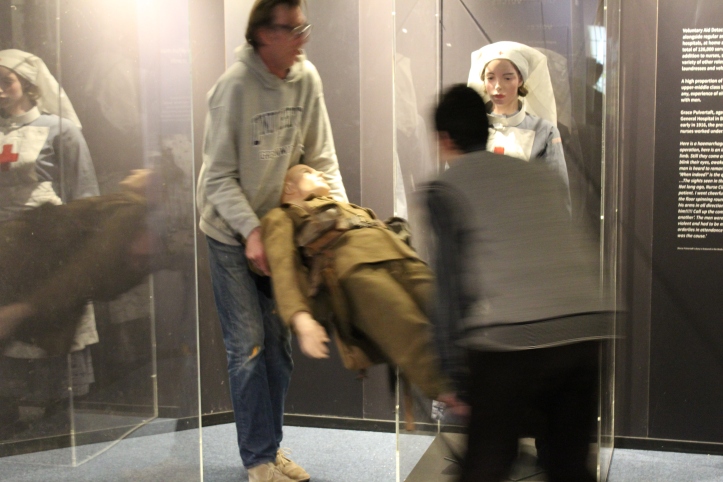
The focus of the exhibition as the title suggests is 1916, the Military Service Act brought in on the 2nd March 1916 is a starting point. The act resulted in conscription to bolster the troops, to begin with the act specified men from 18 to 41 years old were liable to be called up for service unless they were married, widowed with children, serving in the Royal Navy, a minister of religion, or working in one of a number of reserved occupations.
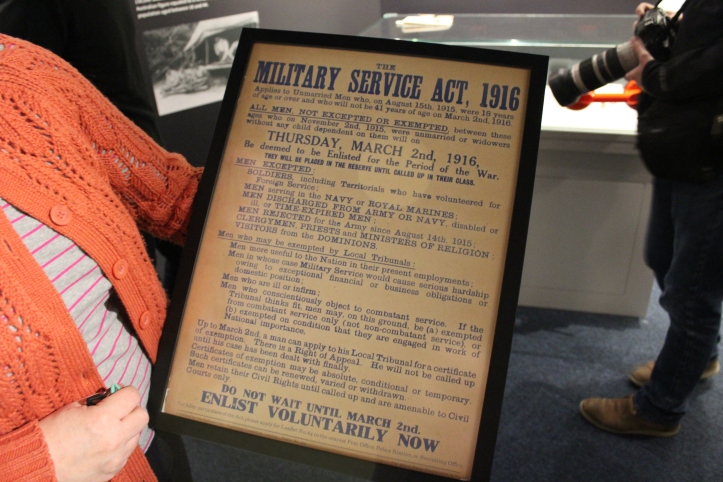
But before we go round I am caught up in the power of a single small white feather, given to a Quaker conscientious objector. Women would give men in civilian clothing a white feather, a symbol of cowardice, in order to shame them into joining up. The feather, small and delicate is attached to a card, on it the words are written ‘for a coward and a liar, rot in hell’. It seems already that this exhibition is going to be more than I expected.
The exhibition focuses on three battles: Verdun, Jutland and the Somme. This is balanced with recreations of Edwardian rooms, a glimpse of life at home and the impact the Great War had on the green fields of Croydon too. Those battles were once so clearly etched on the minds of the public, the death tolls are staggering – the battle of the Somme alone had more than 1 million casualties. Memories have been refreshed with the World War 1 commemorations, but I wonder how quickly they will slide from memories again?
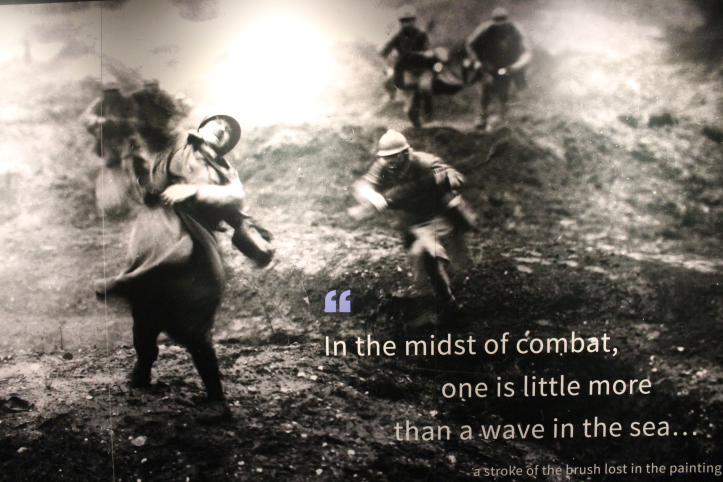
There are local themes and connections brought out as you would expect with 251 men who attended the school losing their lives in the conflict. There are surprising and often very poignant tales, in particular the story of the Red Baron, Manfred von Richthofen’s first victory. The German flying ace, shot down and killed a former Whitgift student, Second Lieutenant Lionel Morris, 19. Morris is buried in the Porte-de-Paris Cemetery in the French town of Cambria, just a few metres away from his old Chemistry teacher from Whitgift, Lieutenant Porter. Porter was killed five days after his pupil in unrelated action, he was aged 32.
You can see the detailed research that has gone into this exhibition when such connections are brought out. There are more local stories with a Zeppelin raid over Croydon in October 1915 that killed 9 people and injured 15, these raids are brought into sharp relief with the Zeppelin ‘trophies’ on display. It helps set the Great War on our doorstep and not just in some distant field.
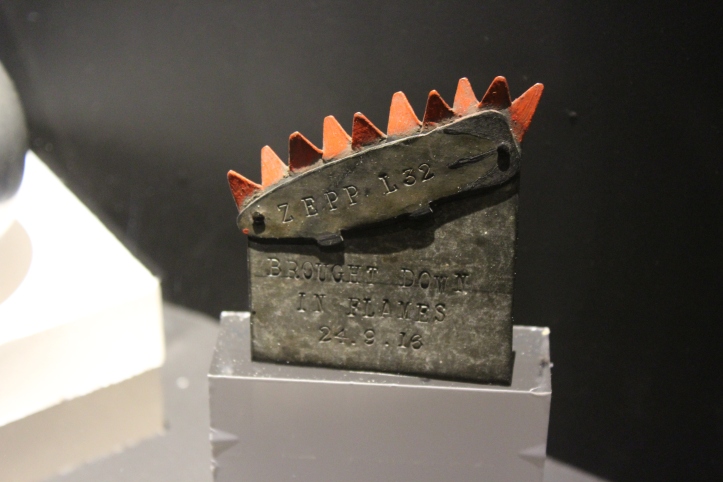
They have also commissioned a Croydon born aviation artist to paint a picture of the Red Baron in action. I have sat in an Albatros, the same type of plane that von Richthofen flew, I couldn’t believe how basic the planes were or how limited the field of vision is once sitting inside.
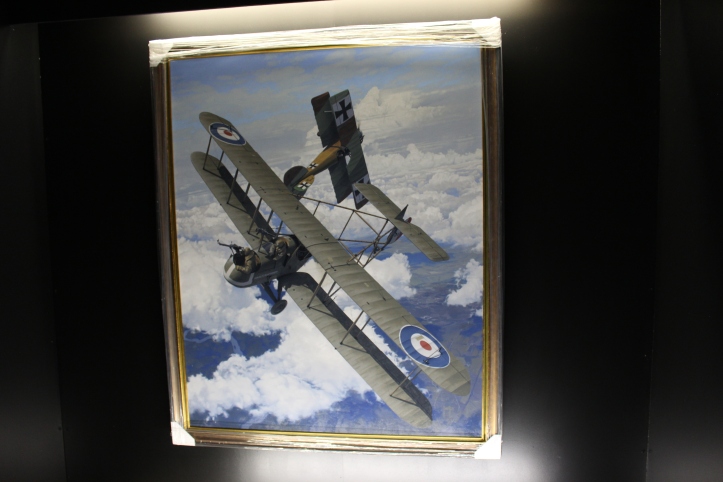
While local stories are brought out, this exhibition is not limited to a parochial view, German, French and English uniforms are shown side by side. Not much distanced these men apart from uniform and language, they were all sons, brothers and fathers, and in death nothing separated them at all. As my visit happens to coincide with International Women’s Day I am pleased to see some women’s stories too. The bravery of nurses and the heartfelt letters from home are in evidence too.
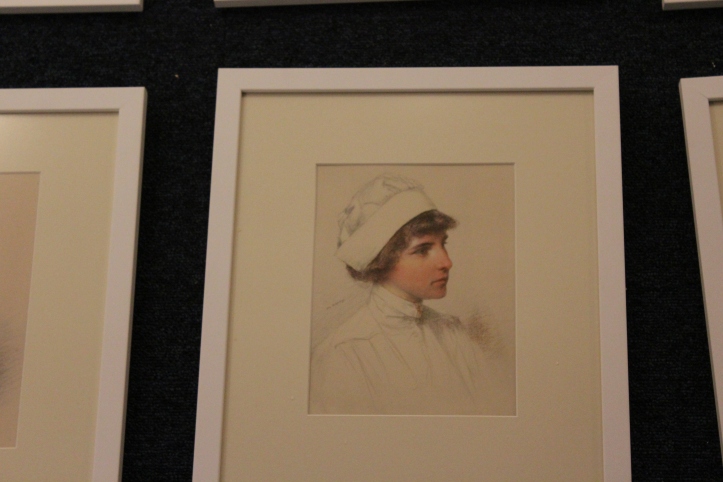
I think what really surprised me about this exhibition is those individual voices that come through and the tone of the text. Dr Christopher Barnett, the headmaster and exhibition director, was keen to steer away from a dry historical presentation. There are letters, postcards and diaries that open up individual voices. I loved the World War 1 songs and poetry along side the description of events, one in particular caught my attention.
My Girl from Battersea
My girl from Battersea
She thinks the world of me
Tattooed from head to toe
That’s why I love her so
Right round her bottom jaw
is the Royal Flying Corps
And right across her back
She has the Union Jack
And Up and down her spine
And on her lovely hips
Is a fleet of battleships
But under each kidney
She has a bird’s eye view of Sydney
How I love her
How I love her
The girl from Battersea
You also can’t forget you are in a school, on press day, boys from the school were photographed and interviewed, they are lucky to be learning in a vivid and engaging way. Their peers, boys and young men only a few years older than they are, who walked the same halls, moaned about the teachers, went off to war and died for their country. The contrast couldn’t be more stark.

I read a piece recently about an initiative to set up primary schools for a term within a museum, here is a prime example of that museum-centered learning in action. The pupils have incredible resources on their doorstep, but the school setting brings benefits to the visitors too. There is a freshness, emotion and poignancy to the exhibition it seems to make the years fall away the Great War no longer seems such a distant memory.
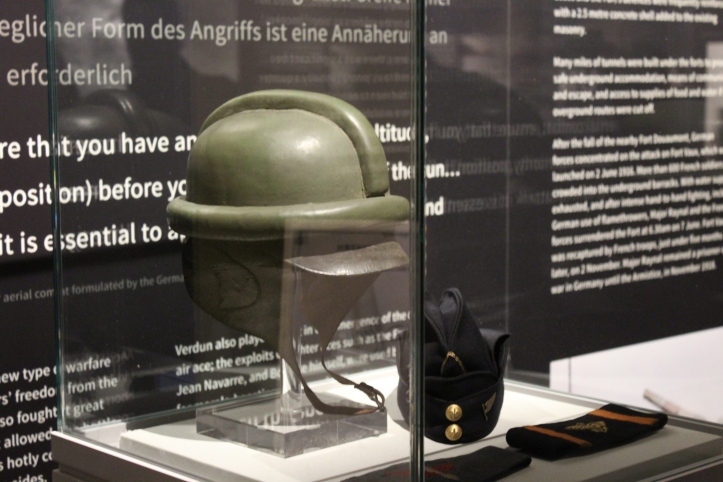
Having worked for the last year as Blogger in Residence at the RAF Museum I have spent a lot of time with World War I objects, but I am still blown away by the scope and scale of objects on display. This is the real nub of why it is worth a visit, the majority of these objects are from private collections, they have not been seen in public before. Dr Barnett has worked tirelessly with his team for three years to secure the objects alongside loans from a number of museums including the Musée de la Grande Guerre du Pays de Meaux, Paris. In particular I loved the German flying helmet and couldn’t help stop in my tracks at the brutality of the ‘Stielhandgranate’ or stick grenade.
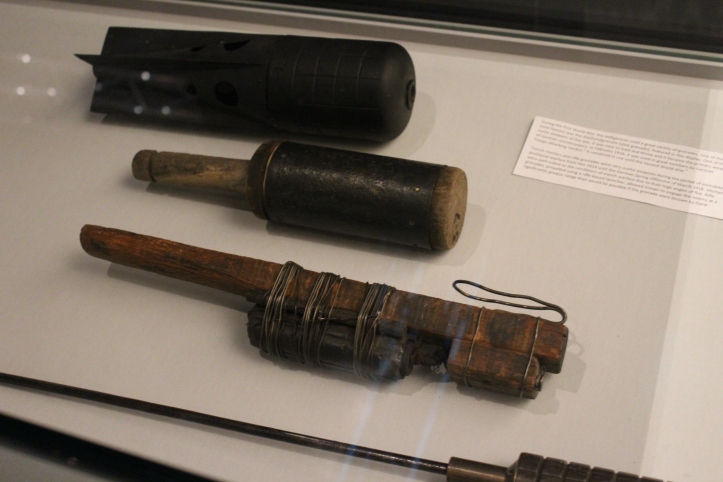
I come today fresh from a symposium on contemporary collecting in museums and as I walk around looking at the postcards, letters, diaries and the fantastic first issues of the Wipers Times, the trench newspaper, I wonder what we (museums) collect from today’s conflict zones. When communication is by Skype, email, Facebook, WhatsApp and Snapchat I wonder how the stories and personal voices will reach us. It makes the exhibition all the more poignant because it is not just a moment in time lost to us but almost a whole way of life too.
I can’t deny it is strange to walk into a school and see an exhibition of this scale and quality, but it is precisely the setting, school boys running around enjoying their life and starting out in the world that brings a freshness and emotion to the displays. No doubt there are so many exhibitions in London you want to get to and never quite make it. But I think here is one not to be missed and it is worth making the effort because those individual stories will stay with you and at the fraction of the price of a British Museum or V&A blockbuster.

xxxxxxxxxx
Remembering 1916 – Life on the Western Front is on at the Whitgift Exhibition Centre, Whitgift School, Croydon from 12 March – 16 April 2016. For ticket prices please see the website – Ticket Prices








